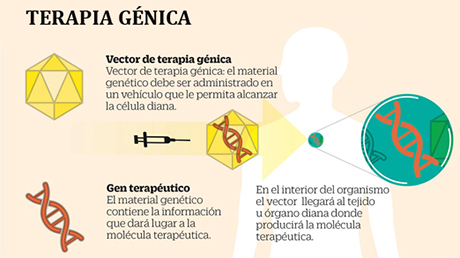Scientists at the University's CIMA succeed in curing Wilson's disease in mice
The research is on the cover of the "Journal of Hepatology", the most prestigious scientific journal in its field. area

Scientists at research center (CIMA ) of the University of Navarra have succeeded in curing Wilson's disease in animal models. Through gene therapy they have developed a therapeutic vector that corrects the origin and reverses the symptoms of this rare liver disease. The work is the cover of the last issue of "Journal of Hepatology", the most prestigious scientific journal in its field area.
Wilson's disease is an inherited disorder with an incidence of 1 case per 30,000 inhabitants. It is caused by mutation of the ATP7B gene, responsible for copper metabolism. Its mutation causes this metal to accumulate in the liver and, later, in other tissues. According to Dr. Oihana Murillo, researcher in the Gene Therapy Program at CIMA and first author of work, "copper is an essential element for human beings. It is involved in the development of the bones, in the functioning of the central nervous system, etc. However, when it accumulates in excess, it can cause oxidative stress and cell damage". In advanced stages of Wilson's disease, the researcher points out, "there is a continuous release of copper into the blood, which causes the progressive accumulation of this metal in other tissues such as the brain and can lead to motor and psychiatric disorders, among other diseases".
The current treatment of Wilson's disease consists of reducing copper deposits with 'chelating' substances (agents that sequester heavy metals) and preventing their prolonged accumulation. "These are palliative treatments, not curative, which must be administered continuously and have numerous side effects," explains Dr. Murillo. "When the liver problem is severe, the only curative treatment is liver transplantation, but it is limited by the scarcity of donors, the need for immunosuppression and the risks associated with surgery," she adds.
Therapeutic vectorToday, hopes for this rare disease are pinned on gene therapy. It consists of the application of information transfer systems Genetics (called vectors) that deliver the correct version of the gene to the cells that have it mutated. Researchers at CIMA have developed a viral vector carrying the ATP7B gene that has proven effective against Wilson's disease in mouse models. "We have proven that this vector corrects the specific cause of Wilson's disease (copper accumulation) and reverses the symptoms and pathological alterations associated with this disease," explains Dr. Gloria González-Aseguinolaza, director of the Gene Therapy and Regulation of Gene Expression Program at CIMA and director of work.
Following these results, the scientists seek to confirm the therapeutic efficacy of the vector, the pharmacology and tolerability of the treatment in pre-clinical models, "in order to be able to initiate the production of the vector on a large scale and at Degree clinically for its administration in patients," conclude the researchers at CIMA.
Journal of Hepatology Volume 64, Issue 2, February 2016, Pages 419-426




